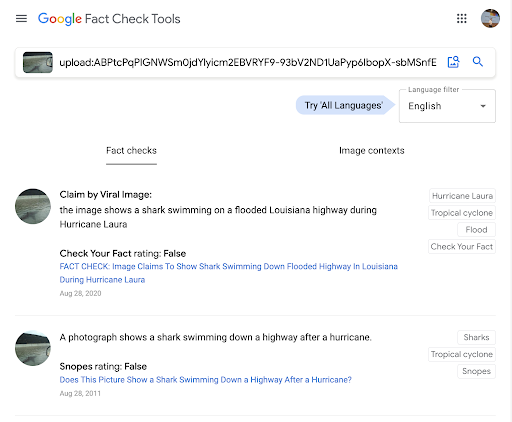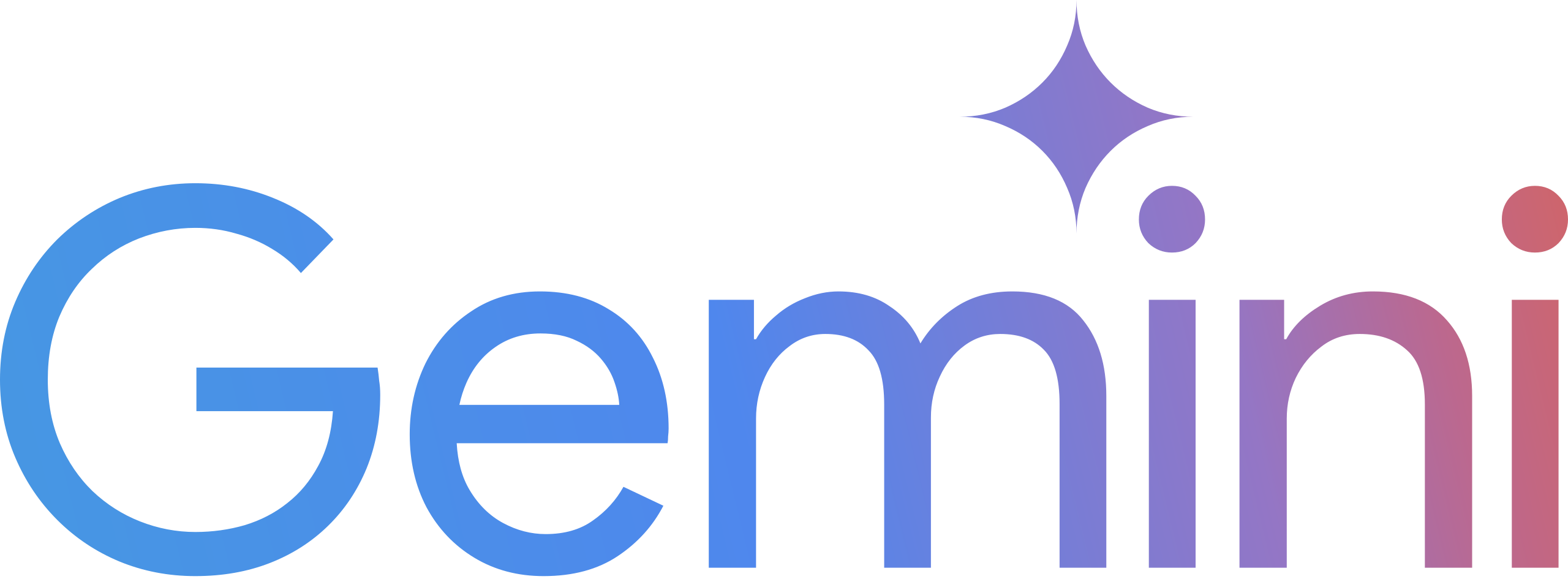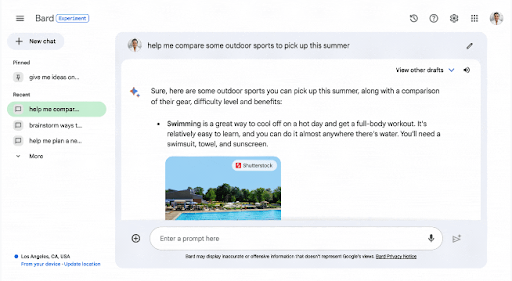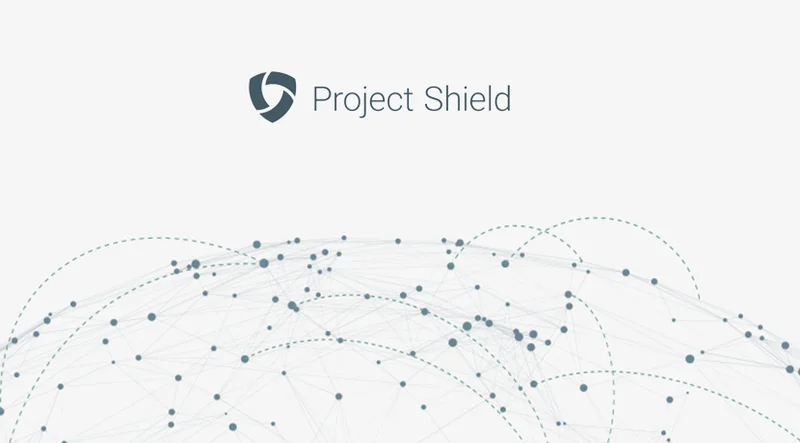- chevron_left Semua pelatihan
Introduction to AI for Journalists

Learn about Google's approach to AI and how our products can support newsrooms

Lesson Overview
![[Website] AI Graphic for Lessons (GNI)](https://storage.googleapis.com/media-newsinitiative/images/Website_AI_Graphic_for_Lessons_GNI.original.png)
This lesson provides a brief overview of Google’s approach to AI and highlights several AI-enabled products used by journalists, including Pinpoint and Factcheck Explorer.
In addition, we offer a separate lesson covering ways that business teams at news publishers can make use of Google’s Generative AI products.
“We believe that AI is a foundational and transformational technology that will provide compelling and helpful benefits to people and society through its capacity to assist, complement, empower, and inspire people in almost every field of human endeavor.“ - Kames Manyika, Jeff Dean, Demis Hassabis, Marian Croak and Sundar Pichai
Learn more: ai.google/why-ai/
For more lessons, visit our trainings page.
![[Website] AI Graphic for Lessons (GNI)](https://storage.googleapis.com/media-newsinitiative/images/Website_AI_Graphic_for_Lessons_GNI.original.png)
History of AI

“I propose to consider the question, Can machines think?” So opens Alan Turing's paper, '"Computing Machinery and Intelligence," a landmark 1950 text that inspired early conversations about Artificial Intelligence.
The world of AI has evolved greatly over the past seven decades. Below are several key milestones and eras in that history:
1950s - Dreaming
Early AI research explored the possibility of creating machines that could think like humans.
1960s - Logic
Logical systems that could solve problems in a rule-based manner were introduced.
1990s - Data
Machine learning algorithms, which can learn to perform tasks without being explicitly programmed, emerged.
2010s - Learning
Machine learning experts developed algorithms inspired by the human brain, which we call “neural networks.”
2017 - Generative AI
A Google development, the Transformer, led to a significant development in Gen AI. The transformer model is a neural network that learns context and thus meaning, by tracking relationships in data like the words in this sentence.

What is Generative AI?
We should begin by defining what we mean by “Generative AI” and how it differs from concepts that preceded it. Below are a few definitions of key terms.
Artificial intelligence (AI) is a general phrase for a set of technologies – including Machine Learning and Generative AI – that enable computers to perform a variety of advanced functions, including the ability to see, understand and translate spoken and written language, analyze data, make recommendations, and much more.
A type of AI, “Machine Learning” refers to specific applications that use data to train a model to perform a given task independently and learn from experience. See our full Introduction to Machine Learning course or watch this video for more information.
Generative AI is a term referring to AI solutions capable of generating new information, such as text, images, videos and sounds.
GenAI solutions are typically based on Large Language Models (LLMs). LLMs are a type of probability engine, a statistical model to predict the likelihood of every possible outcome based on an input.
"My favorite color is..." and the LLM could come back with "red," "blue," or "purple" based on the most probable answer in its trained data set.
In simple terms, this is Gen AI. It has taken an input and generated an output.
To summarize, Generative AI is…
- Technology that assists in complex tasks
- Technology that boosts human capabilities
- A replacement for remedial or redundant tasks (automation)
… but is not:
- A sentient being
- A magic bullet
- The answer to every problem
- A replacement for human intelligence
Google’s AI Principles
Google is optimistic about the potential of AI, but we recognize that advanced technologies can raise important challenges that must be addressed clearly, thoughtfully, and affirmatively. In tackling these challenges a set of principles was developed:
- Be socially beneficial.
- Avoid creating or reinforcing unfair bias.
- Be built and tested for safety.
- Be accountable to people.
- Incorporate privacy design principles.
- Uphold high standards of scientific excellence.
- Be made available for uses that accord with these principles.
For more see ai.google/responsibility/principles
Google’s AI Tools
Google has a range of AI powered tools that can be used by journalists to fact-check, analyze and generally help with reporting.
These range from tools based on machine learning to the latest developments in Generative AI.
Let's look at the use of Pinpoint, Fact Check Explorer and Gemini in the newsroom.
Pinpoint

Pinpoint is a tool that Google built specifically to meet the needs of journalists, namely to help them uncover information.
Pinpoint is the answer to the question, what would it look like if we put the best of Google’s search, AI and machine learning technology into the hands of reporters?
It uses Google Search and Knowledge Graph, optical character recognition and speech-to-text technologies to search through scanned PDFs, images, handwritten notes, e-mails and audio files to help reporters find stories buried in large documents
To learn more about Pinpoint see our full lesson on how to use the tool.
For full details on where Pinpoint is available see help center.

Fact Check Explorer: Overview

Fact Check Explorer is a Google tool that helps you find fact checks which have already been investigated and published by independent organizations around the world.
The features in the Fact Check Explorer use AI to find text and image matches.
Additional functionality uses AI to match images to a wide corpus of fact checks, in addition it also lets you investigate the changing context of an image over time and when the image was first indexed by Google.

Image Search: Step 1

Fact Check Explorer’s new image feature works in two parts. The first is that it allows you to upload an image to check against all previously fact checked images.

Image Search: Step 2

Once uploaded the we can see if the image has appeared anywhere in an existing fact check.
In this example on the right of the shark it returns a number of previous fact checks on the image such as one from Snopes, a fact-checking site online, which states:
Snopes rating: False

Image Search: Step 3

One way images can be manipulated is by using them in the wrong context.
Clicking on ‘Image contexts’ allows you to see the context and timeline of an image. It shows when it was first indexed by Google and how it has been used since.
Using Fact Check Explorer to search for an image will show the results of that image on the web. You’ll see an overview of the different topics associated with the image and their evolution over time.

Image Search: Step 4

In the example of the shark it shows a number of locations that have been associated with the image: Houston, Texas, Florida, etc.
Clicking on a location will then return the links where that image occurs alongside that piece of context e.g. it will only show the links where the image of the shark is associated with the word "Houston."
This will filter the links under ‘References’ accordingly.

Image Search: Step 5
Gemini: Introduction

Gemini, which was previously called Bard, is an early stage product to help you use generative AI to supercharge your ideas.
You can use Gemini to boost your productivity, accelerate your ideas and fuel your curiosity.
You might ask Gemini to give you tips to reach your goal of reading more books this year, explain quantum physics in simple terms or spark your creativity by outlining a blog post.
As with all generative AI there is a risk of “hallucinations,” it’s always important to fact-check the responses of any AI.

Gemini: Getting Started

To get started, go to gemini.google.com. Gemini can be an outlet for creativity, and a launchpad for curiosity.
Prompts are how you query Gemini to get a specific answer.
A simple prompt could be something like: Help me to compare some outdoor sports I could pick up this summer?
Gemini will give a range of ideas and with subsequent prompts you can create a specific plan on how to find, practice and improve on any given sport.
You can then pin them and rename your Gemini conversation.

Gemini: Best Practices

To get the most out of Gemini you need to master prompts. Being a great prompt engineer doesn't require coding experience. Creativity and persistence will be enough.
Some best practices:
- Clearly communicate what content or information is most important.
- Structure the prompt: Start by defining its role, give context/input data, then provide the instruction.
- Use specific, varied examples to help the model narrow its focus and generate more accurate results.
- Use constraints to limit the scope of the model's output.
- Break down complex tasks into a sequence of simpler prompts.
- Instruct the model to evaluate or check its own responses before producing them. ("Make sure to limit your response to 3 sentences.")
Lastly, the more creative and open-minded you are, the better your results will be. LLMs and prompt engineering are still in their infancy, and evolving every day.
For ideas on how to leverage this new technology take a look at this guide on 10 helpful ways to use Gemini.

Gemini: Easily Check Outputs with Google Search
One feature to help with fact checking is Gemini’s “Google it” button to more easily double-check its answers.
When you click on the “G” icon, Gemini will read the response and evaluate whether there is content across the web to substantiate it.
When a statement can be evaluated, you can click the highlighted phrases and learn more about supporting or contradicting information found by Search.
This feature is available everywhere Gemini has been launched. Gemini has been launched.
-
Meningkatkan traffic situs dengan Google Ads
PelajaranDapatkan lebih banyak traffic dari artikel terbaik AndaHapus dari akun AndaSimpan ke akun AndaNone -
Project Shield: Berlindung dari sensor digital.
PelajaranAlat gratis untuk melindungi situs Anda dari serangan Distributed Denial of Service (DDoS).Hapus dari akun AndaSimpan ke akun AndaNone -
Meningkatkan Pendapatan Iklan Digital dengan Google Ad Manager
PelajaranMulai gunakan Google Ad Manager untuk meningkatkan pendapatan iklan digitalHapus dari akun AndaSimpan ke akun AndaNone








